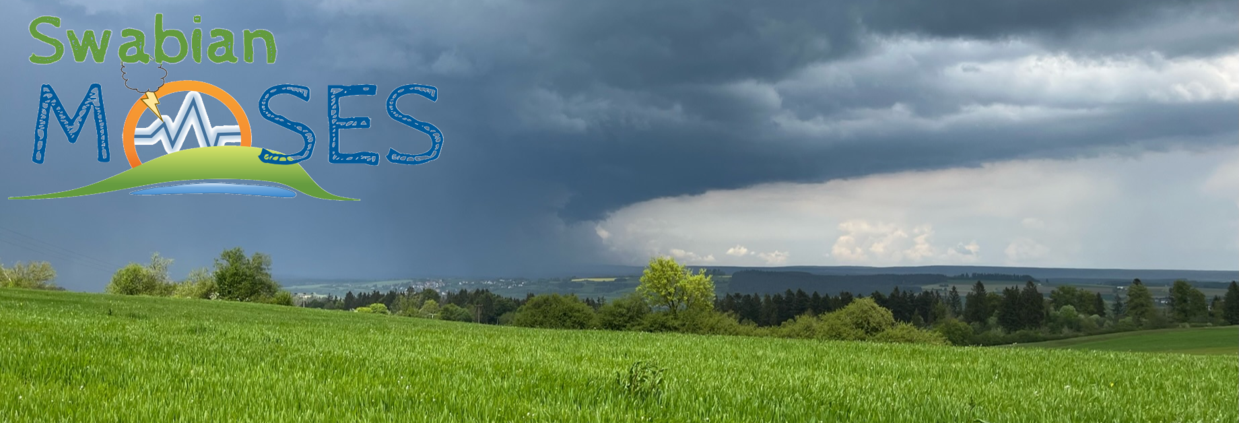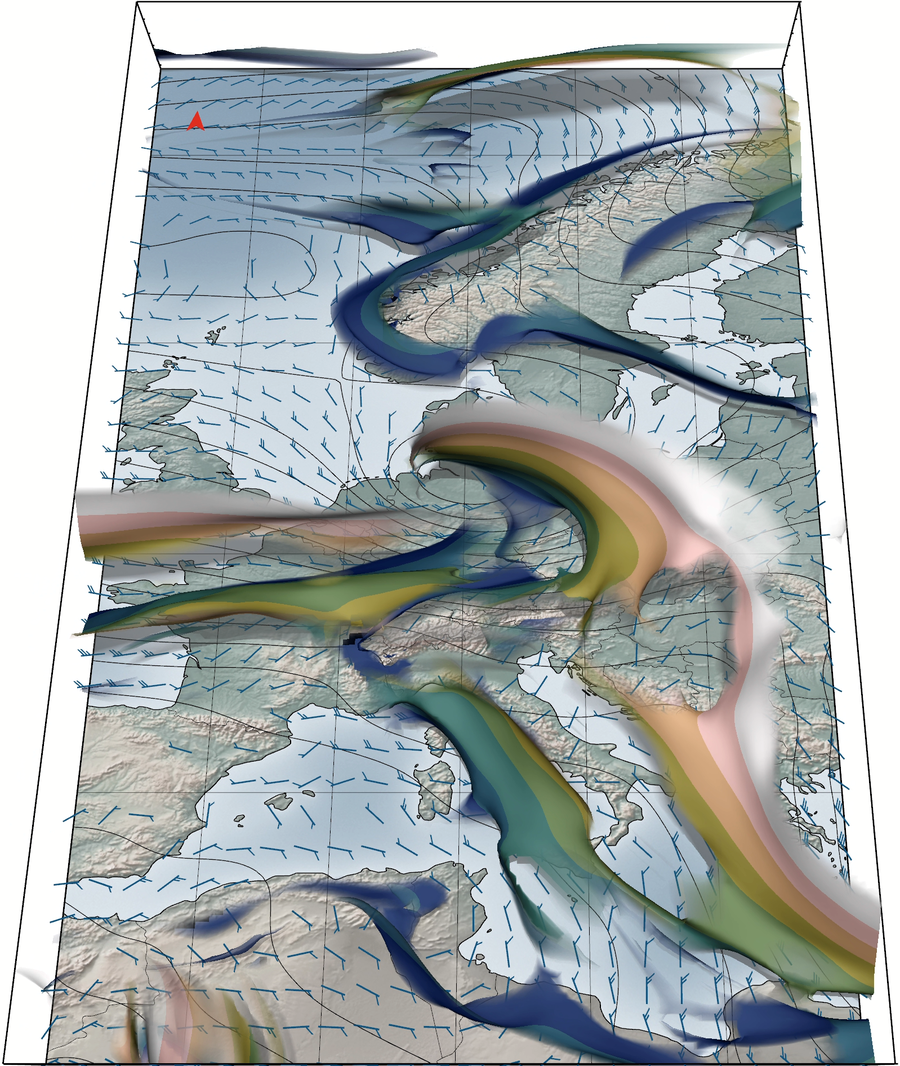Swabian MOSES 2023

The Swabian MOSES campaign will be conducted between May and September 2023 in the southeastern Black Forest, the Neckar Valley and the Swabian Alb in southwestern Germany. It focuses on a hydro-meteorological extreme, which is not only of great relevance for the study area: local convective cells (thunderstorms), which are accompanied by hail and heavy rain and can lead to local flooding as well as pollutant inputs into water bodies. These events have increased significantly in recent years due to climate change and cause high damages in the region, which is a "hotspot" for convective storms in Germany.
MOSES(Modular Observation Solutions for Earth Systems | Helmholtz Climate Initiative) is a novel observation system of the Helmholtz Association, developed by the Helmholtz Centres in the research field "Earth and Environment" and established as a cross-thematic activity in the program Changing Earth - Sustaining our Future 2021-2027.
MOSES includes highly flexible and mobile observing modules (such as the KITcube) specifically designed to study the interactions of short-term events and long-term trends across all Earth compartments. Highly dynamic events such as hydrologic extremes, ocean eddies, and permafrost melt are the focus of this event-driven observation and research initiative.
The primary research goal is to capture and study the entire chain of events: from the onset of the event, through its evolution to the mature stage and associated impacts - such as consequences for agriculture and forestry or damage to infrastructure and property - to the event's decay at the end of the chain.
In addition to the Institute for Meteorology and Climate Research(IMK) of the Karlsruhe Institute of Technology (KIT), which is responsible for the project, the Helmholtz Centre for Environmental Research (UFZ) in Leipzig, the Helmholtz Centre Potsdam - German Research Centre for Geosciences (GFZ), the Forschungszentrum Jülich (FZJ), the German Aerospace Center (DLR), the Eberhard Karls Universität Tübingen, the University of Hohenheim, the University of Stuttgart, University of Freiburg and the German Weather Service (DWD) are involved with different measurement systems and research questions.
03.07.2023: IMK researchers are on the lookout for hailstones. Click here for the message
22.06.2023: Two newspaper articles about the measurement campaign. Click here for the message
20.06.2023: Start of the second IOP. Click here for the message
10.06.2023: Radio report about Swabian MOSES. More info here
07.06.2023: The first IOP starts. Click here to read the message
02.06.2023: Drone flight over the KITcube main site. Click here for the video.
01.06.2023: Link to the official press release on the campaign launch: KIT & UFZ.






Participating institutions
In order to obtain as much scientific data and information as possible during the measurement campaign and to exploit synergies, researchers from many different institutions and disciplines are participating in the measurement campaign:
- Karlsruhe Institute of Technology (KIT) with the IMK-TRO, IMK-ASF, IMK-AAF and IWG
- Helmholtz Centre for Environmental Research (UFZ)
- Helmholtz Centre Potsdam German Research Centre for Geosciences (GFZ)
- Research Center Jülich (FZJ)
- German Aerospace Center (DLR)
- German Weather Service (DWD)
- Eberhard Karls University Tübingen
- University of Hohenheim
- University of Stuttgart
- University of Mainz
- University of Freiburg

